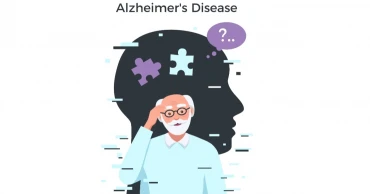brain
Cerebral Haemorrhage: Signs, Reasons, Treatment, and Prevention
Cerebral haemorrhage is often referred to as intracerebral haemorrhage (ICH) or hemorrhagic stroke. It is a critical medical condition characterised by bleeding within the brain tissue. This condition requires immediate medical attention. This article delves into some basic knowledge about ICH to ensure proper diagnosis and treatment.
What is Cerebral Haemorrhage?
Cerebral haemorrhage or ICH, is a type of stroke that occurs when a blood vessel in the brain bursts and bleeds into the surrounding brain tissue. This bleeding disrupts the blood supply to the brain and damages brain cells.
According to research, cerebral haemorrhage is the second most common cause of stroke. Research also shows that ICH is the deadliest type of stroke, with a mortality rate of around 40%-50% within the first month.
Read more: Why are Suicide Rates Higher Among Men?
Types of Cerebral Haemorrhage
.
Intraparenchymal Haemorrhage
Intraparenchymal haemorrhage (IPH) is a type of bleeding that occurs within the brain tissue. According to Wikipedia, IPH is the most common type and accounts for around 8-13% of all strokes and can arise from various underlying conditions. IPH may lead to death or significant disability This is why it is an urgent medical situation requiring immediate attention.
Intraventricular Haemorrhage
Intraventricular haemorrhage (IVH) is caused by bleeding in the ventricles, which are fluid-filled cavities in the brain. These produce and circulate cerebrospinal fluid, a protective cushion for the brain and spinal cord. It can arise from physical trauma or as a result of a hemorrhagic stroke.
According to Wikipedia, around 30% of IVH cases are primary, while 70% are secondary. It has been observed that IVH occurs in approximately 35% of moderate to severe traumatic brain injuries. Consequently, IVH typically accompanies extensive associated damage, leading to unfavourable outcomes in most cases.
Read more: Reasons Why Ramadan Fasting is More Beneficial Than Dieting
What Causes Cerebral Haemorrhage
.
Head Trauma
Head injuries from accidents or falls can damage blood vessels in the brain. It may lead to brain haemorrhage in individuals under the age of 50.
High Blood Pressure
Untreated hypertension can weaken blood vessel walls. It increases the likelihood of a brain haemorrhage.
Aneurysm
Abnormal bulges in blood vessel walls are known as aneurysms, which occur when blood vessel walls weaken and swell. It potentially leads to a burst and subsequent brain bleeding and can result in a stroke.
Read more: Daily Strategies for Neuroplasticity: Enhancing Focus and Alleviating Anxiety
Blood Vessel Abnormalities
Arteriovenous malformations (AVMs) cause weakness in blood vessels in and around the brain, often only detected when symptoms arise.
Amyloid Angiopathy
This blood irregularity is typically seen in older adults with high blood pressure. It can lead to small unnoticed bleeds that may eventually result in a larger brain haemorrhage.
Blood Disorders
Conditions like haemophilia and sickle cell anaemia contribute to lower blood platelet levels and clotting. These increase the risk of brain bleeds.
Blood Thinner
While essential for some conditions, blood thinners can increase the risk of bleeding, including cerebral haemorrhage.
Read more: Good Stress: What Are the Benefits of Eustress?
Liver Disease
People with liver conditions have an elevated risk of bleeding issues, including brain haemorrhage.
Brain Tumours
Individuals with a history of brain tumours are at a heightened risk of developing cerebral haemorrhage.
Symptoms and Signs of ICH
Key symptoms of cerebral haemorrhage may include:
- Sudden and severe headache- Nausea and vomiting- Weakness or paralysis on one side of the body- Difficulty speaking or understanding speech- Vision problems- Loss of consciousness- Seizures- Dizziness- Loss of coordination- Difficulty balancing- Abnormal sense of taste- Difficulty swallowing- Difficulty writing or reading- Loss of fine motor skills.
Read more: Which Vitamins are Essential for Women?
How to Diagnose and Treat ICH
To diagnose a brain bleed, a healthcare provider conducts an immediate physical and neurological examination, alongside reviewing the patient's medical history and symptoms. Following this, they may order imaging tests such as a CT scan, MRI, or MRA to assess the location, extent, and potential cause of the bleeding.
Additional tests, including an electroencephalogram, chest X-ray, urinalysis, complete blood count (CBC), eye exam, lumbar puncture (spinal tap), or angiography, may also be utilised to detect underlying causes.
The treatment for a brain bleed varies depending on the severity and location of the bleed. Healthcare providers strive to halt the bleeding and tackle the root cause. Treatment options may encompass surgery and medication.
Prompt medical intervention can minimise brain damage, enhancing the prospects of recovery. Additionally, patients may receive supplemental oxygen through a ventilator, nutrients and fluids intravenously or via a feeding tube, and close monitoring in an intensive care unit to ensure stable vital signs.
Read more: How to Improve Focus by Training the ‘Attention Muscle’
1 year ago
Daily Strategies for Neuroplasticity: Enhancing Focus and Alleviating Anxiety
Neuroplasticity, also known as brain or neural plasticity, is the remarkable ability of the brain to reconfigure its neural connections throughout life. This phenomenon underlines the brain's capacity to adapt, learn, and reshape itself in response to experiences and stimuli. It plays a critical role in learning new concepts, honing skills, and recovering from brain injuries, significantly boosting productivity. Let's explore some effective methods for enhancing your brain's neuroplasticity.
Neuroplasticity Techniques for Everyday Life to Enhance Brain Productivity
Juggling as a Brain Exercise
Ever tried juggling with balls? It's not just entertaining; it's a brain booster! Juggling engages multiple brain areas, improving multitasking abilities and spatial perception. Regularly practicing juggling, even for just 10 minutes a day, can develop new neural pathways. It's a delightful approach to enhance hand-eye coordination and your brain's flexibility.
The Power of Reading Aloud
Reading aloud isn't just for kids; it's beneficial for adults too! This activity stimulates the brain's language centers, involving both auditory and speech processing. Regularly reading aloud can strengthen language comprehension and communication abilities. It's an easy yet powerful way to activate and improve your brain's language functions.
Read more: 10 Ways to Boost Team Productivity in Workplace
Musical Instrument Mastery
Ever considered learning an instrument like the guitar? It's a fantastic way to foster creativity and fine motor skills. Research indicates that musicians often have more neuroplastic brains. Playing an instrument enhances memory, coordination, and overall brain adaptability. As you progress, you'll notice improvements in focus, memory, and creative thinking. It's enjoyable and beneficial for your brain.
Embracing Mindful Moments
Consider incorporating mindful walks in nature or familiar environments into your routine. Mindfulness promotes concentration and mental clarity. Regular mindful breaks, and focusing on breathing with closed eyes, can reduce stress, improve focus, and enhance overall brain function.
2 years ago
Best and Worst Foods for Brain, Memory, Focus
The brain is the control center of the body which makes humans think, and feel. It keeps the heart beating, lungs breathing and allows the body organs to move, and sense. Although there is no magic pill to prevent cognitive decline, nutritionists emphasize that the most important strategy one can follow to boost the brain, memory, and focus is to take a healthy diet plan including a lot of fruits, vegetables, legumes, and whole grains. Let’s find out the beneficial and harmful foods and drinks for the brain health.
What Is Brain Food?
Brain foods are those that are packed with antioxidants, healthy fats, vitamins, and minerals and provide the brain with energy. These foods also help in protecting brain cells, which helps ward off the development of brain diseases. A nutritious diet can create a considerable number of essential hormones and neurotransmitters which can influence cognitive abilities.
Top 10 Foods for Brain, Memory, & Focus
Fatty fish
Fatty fish is at the top of the list of brain foods that are rich sources of omega-3 fatty acids. About 60% of the brain is made of fat, and half of that fat consists of omega-3 fatty acids. Omega-3s help to build brain and nerve cells, and these fats are essential for learning and memory. Plus omega-3 fatty acids may slow age-related mental decline and help ward off Alzheimer’s disease.
Read More: Best Foods for Hair Growth: What to Eat, Drink and Avoid
Oily fish like tuna, salmon, trout, sardines, mackerel, etc contain omega-3 fatty acids. Among the local fishes, Hilsa fish is rich in omega-3 fatty acids including EPA and DHA.
Coffee
Coffee’s two main components namely caffeine and antioxidants can help support brain health. Caffeine has a number of positive effects on the brain. It can increase alertness by keeping the brain alert by blocking adenosine (a chemical messenger that makes One feel sleepy).
Moreover, this beverage can improve mood by boosting some of the “feel-good” neurotransmitters like dopamine and sharpened concentration.
Turmeric
Turmeric is a deep-yellow spice that is a main ingredient in curry powder. It has huge health benefits for the brain as it has curcumin (the active ingredient in turmeric) helps to cross the blood-brain barrier, which means it can directly enter the brain and benefit the cells there.
Read More: Best foods for expecting mothers
It has antioxidant and anti-inflammatory compounds that can benefit memory, eases depression, and helps new brain cells grow.
Broccoli
Broccoli is rich in amazing plant compounds, including antioxidants, and vitamin K. It has a fat-soluble vitamin that is essential for forming sphingolipids (a type of fat) that are massively packed into brain cells and vitamin K intake to improve memory and cognitive status.
Pumpkin seeds
One will get powerful antioxidants from pumpkin seeds that protect the body and brain from free-radical damage. One will also get magnesium, iron, zinc, and copper from these seeds.
Zinc is an important element for nerve signaling and zinc deficiency can cause many neurological conditions like Alzheimer’s disease, depression, and Parkinson’s disease.
Read More: Heat Stroke Prevention: Best foods, drinks to avoid heat exhaustion
Magnesium is also essential for learning and memory and low magnesium levels can cause many neurological diseases such as migraine, depression, and epilepsy. Copper helps control nerve signals and iron deficiency is often characterized by brain fog and impaired brain function.
2 years ago
Promising gene therapy delivers treatment directly to brain
When Rylae-Ann Poulin was a year old, she didn’t crawl or babble like other kids her age. A rare genetic disorder kept her from even lifting her head. Her parents took turns holding her upright at night just so she could breathe comfortably and sleep.
Then, months later. doctors delivered gene therapy directly to her brain.
Now the 4-year-old is walking, running, swimming, reading and riding horses — “just doing so many amazing things that doctors once said were impossible,” said her mother, Judy Wei.
Rylae-Ann, who lives with her family in Bangkok, was among the first to benefit from a new way of delivering gene therapy — attacking diseases inside the brain — that experts believe holds great promise for treating a host of brain disorders.
Her treatment recently became the first brain-delivered gene therapy after its approval in Europe and the United Kingdom for AADC deficiency, a disorder that interferes with the way cells in the nervous system communicate. New Jersey drugmaker PTC Therapeutics plans to seek U.S. approval this year.
Meanwhile, about 30 U.S. studies testing gene therapy to the brain for various disorders are ongoing, according to the National Institutes of Health. One, led by Dr. Krystof Bankiewicz at Ohio State University, also targets AADC deficiency. Others test treatments for disorders such as Alzheimer’s, Parkinson’s and Huntington’s.
Challenges remain, especially with diseases caused by more than a single gene. But scientists say the evidence supporting this approach is mounting — opening a new frontier in the fight against disorders afflicting our most complex and mysterious organ.
“There’s a lot of exciting times ahead of us,” said Bankiewicz, a neurosurgeon. “We’re seeing some breakthroughs.”
___
The most dramatic of those breakthroughs involve Rylae-Ann’s disease, which is caused by mutations in a gene needed for an enzyme that helps make neurotransmitters like dopamine and serotonin, the body’s chemical messengers. The one-time treatment delivers a working version of the gene.
At around 3 months old, Rylae-Ann began having spells her parents thought were seizures — her eyes would roll back and her muscles would tense. Fluid sometimes got into her lungs after feedings, sending her to the emergency room. Doctors thought she might have epilepsy or cerebral palsy.
Around that time, Wei's brother sent her a Facebook post about a child in Taiwan with AADC deficiency. The extremely rare disorder afflicts about 135 children worldwide, many in that country. Wei, who was born in Taiwan, and her husband, Richard Poulin III, sought out a doctor there who correctly diagnosed Rylae-Ann. They learned she could qualify for a gene therapy clinical trial in Taiwan.
Though they were nervous about the prospect of brain surgery, they realized she likely wouldn’t live past 4 years old without it.
Rylae-Ann had the treatment at 18 months old on November 13, 2019 — which her parents have dubbed her “reborn day.” Doctors delivered it during minimally invasive surgery, with a thin tube through a hole in the skull. A harmless virus carried in a functioning version of the gene.
“It gets put into the brain cells and then the brain cells make the (neurotransmitter) dopamine,” said Stuart Peltz, CEO of PTC Therapeutics.
Company officials said all patients in their clinical trials showed motor and cognitive improvements. Some of them, Peltz said, could eventually stand and walk, and continue getting better over time.
Bankiewicz said all 40 or so patients in his team’s NIH-funded study also saw significant improvements. His surgical approach is more involved and delivers the treatment to a different part of the brain. It targets relevant circuits in the brain, Bankiewicz said, like planting seeds that cause ivy to sprout and spread.
“It’s really amazing work,” said Jill Morris, a program director with the National Institute of Neurological Disorders and Stroke, which helped pay for the research. “And he has seen a lot of consistency between patients.”
One is 8-year-old Rian Rodriguez-Pena, who lives with her family near Toronto. Rian got gene therapy in 2019, shortly before her 5th birthday. Two months later, she held her head up for the first time. She soon started using her hands and reaching for hugs. Seven months after surgery, she sat up on her own.
“When the world was crumbling around us with COVID, we were at our house celebrating like it was the biggest party of our lives because Rian was just crushing so many milestones that were impossible for so long,” said her mom, Shillann Rodriguez-Pena. “It’s a completely different life now.”
___
Scientists say there are challenges to overcome before this approach becomes widespread for more common brain diseases.
For example, the timing of treatment is an issue. Generally, earlier in life is better because diseases can cause a cascade of problems over the years. Also, disorders with more complex causes — like Alzheimer's — are tougher to treat with gene therapy.
“When you’re correcting one gene, you know exactly where the target is,” said Morris.
Ryan Gilbert, a biomedical engineer at New York's Rensselaer Polytechnic Institute, said there can also be issues with the gene-carrying virus, which can potentially insert genetic information in an indiscriminate way. Gilbert and other researchers are working on other delivery methods, such as messenger RNA – the technology used in many COVID-19 vaccines – to deliver a genetic payload to the nucleus of cells.
Scientists are also exploring ways to deliver gene therapy to the brain without the dangers of brain surgery. But that requires getting around the blood-brain barrier, an inherent roadblock designed to keep viruses and other germs that may be circulating in the bloodstream out of the brain.
A more practical hurdle is cost. The price of gene therapies, borne mostly by insurers and governments, can run into the millions. The one-time PTC therapy, called Upstaza, costs more than $3 million in Europe, for example.
But drugmakers say they are committed to ensuring people get the treatments they need. And researchers are confident they can overcome the remaining scientific obstacles to this approach.
“So I would say gene therapy can be leveraged for many sorts of brain diseases and disorders,” Gilbert said. "In the future, you’re going to see more technology doing these kinds of things.”
The families of Rylae-Ann and Rian said they hope other families dealing with devastating genetic diseases will someday get to see the transformations they’ve seen. Both girls are continuing to improve. Rian is playing, eating all sorts of foods, learning to walk and working on language. Rylae-Ann is in preschool, has started a ballet class, and is reading at a kindergarten level.
When her dad picks her up, “she runs to me ... just gives me a hug and says, ‘I love you, Daddy.’ he said. “It’s like it’s a normal day, and that’s all we ever wanted as parents.”
___
The Associated Press Health and Science Department receives support from the Howard Hughes Medical Institute’s Science and Educational Media Group. The AP is solely responsible for all content.
2 years ago
Alzheimer's Disease: Symptoms, Causes, Preventions
Thor actor Chris Hemsworth has decided to take a break from acting after discovering the risk of Alzheimer's. This news has shocked millions of fans worldwide. Now, what is Alzheimer's? It is a neurological ailment that causes cognitive decline and memory loss. Alzheimer's disease is characterized by the death of brain cells. If you are experiencing frequent memory loss, this should not be ignored. Let’s take a look at the symptoms, causes, and preventive measures of Alzheimer's disease.
What is Alzheimer's?
Alzheimer's disease is an incurable and irreversible brain condition. The condition has a profound impact on a person's memory, reasoning, learning, and organizational abilities, and ultimately impairs their capacity to do routine everyday tasks. Alzheimer's disease is not a typical component of aging.
The symptoms of Alzheimer's disease worsen with time. In fact, experts estimate that the disease process may continue for at least ten years before the onset of Alzheimer's clinical manifestations.
Read More: Safe Toys for Children: Tips to avoid harmful playing objects
German psychiatrist Alois Alzheimer, a pioneer in correlating symptoms to microscopic brain changes, tells the eerie case of Auguste D., a woman with severe memory loss, unjustified suspicions about her family, and other deteriorating psychological abnormalities.
At her autopsy, he saw significant shrinkage and aberrant deposits surrounding nerve cells in her brain. Dr. Alzheimer passed away in 1915, never imagining that his experience with Auguste D. would impact the lives of millions and spark a large worldwide research initiative.
Dr. Alzheimer is revered by scientists not just for his ground-breaking description of a serious illness, but also as a role model. He created a new benchmark for comprehending neurodegenerative illnesses by developing a deep therapeutic interaction with his patients and using innovative scientific methods to assess how symptoms connected to physical brain changes manifest.
Read More: 7 Homemade Drinks for Sore Throat
Symptoms and Signs of Alzheimer's
Alzheimer's disease is characterized by memory loss. Recent talks and occurrences may be difficult to recall at an early stage. As the illness advances, memory deficits increase, and more symptoms emerge.
Initially, a person with Alzheimer's disease may be aware of memory and thinking organization difficulties. A family member or acquaintance may be more likely to observe the worsening of symptoms.
Changes in the brain caused by Alzheimer's disease exacerbate problems with:
Memory
Everyone has periodic memory lapses, but Alzheimer's disease is characterized by persistent and worsening memory loss that impairs the capacity to perform at work or at home.
Read More: Food, Drinks during Dengue: What to consume, what to avoid
Individuals with Alzheimer's may repeat comments and inquiries repeatedly. Forget talks, appointments, and activities, and subsequently do not recall them. Frequently misplace belongings, frequently placing them in odd places. Get lost in familiar surroundings. Eventually, forget the names of loved ones and commonplace items.
Multitasking
Managing funds, balancing checkbooks, and paying bills on time may be very demanding, and multitasking is especially difficult. A person with Alzheimer's may eventually lose the ability to identify and manipulate numbers.
Making choices and judgments
Alzheimer's disease diminishes the capacity to make appropriate choices and judgments in daily circumstances. A person may, for instance, make bad or unusual decisions in social encounters or wear unsuitable clothing for the weather. It may be more challenging to react successfully to routine concerns, such as food on the stove that is burning or unexpected driving scenarios.
Read More: Conjunctivitis: Causes, Symptoms, Treatment and Prevention
Planning and completing routine duties
As the illness develops, tasks that formerly required sequential steps, such as planning and making a meal or playing a beloved game, become difficult. People with severe Alzheimer's disease often forget how to do fundamental functions such as dressing and washing.
Alterations in personality and conduct
Moods and behaviors may be affected by Alzheimer's disease-related brain alterations. Because these abilities are governed by regions of the brain impacted later in the progression of the illness, they may be retained for longer.
Causes of Alzheimer's Disease
Alzheimer's disease is caused by aberrant protein accumulation in the brain. The accumulation of these proteins, which are known as amyloid protein and tau protein, causes cell death.
Read More: Mental Health: Types of Mental Illness and supporting someone with a mental health problem
In addition to nerve cells, the human brain includes around 100 billion different types of cells. The nerve cells collaborate to carry out all the communications required for cognitive processes such as thinking, learning, remembering, and planning. Scientists think that amyloid protein accumulates in brain cells to create plaques, which are bigger aggregates.
Tau forms tangles composed of twisted fibers of another protein. These plaques and tangles impede the connection between nerve cells, preventing them from performing their functions. Alzheimer's disease symptoms are caused by the gradual and progressive loss of nerve cells, which begins in one region of the brain and spreads to others.
How to Minimize the Risk of Alzheimer's
There are no proven preventative methods. At present, the most effective means of preventing cognitive decline are behaviors that promote health.
Read More: Protecting Your Child’s Mental Health: 10 Tips for Parents
The following steps may be useful:
Attempt to stop smoking:
If you are a smoker, quitting has both immediate and long-term health advantages.
Exercise frequently:
Physical activity decreases the risk of several diseases, including cardiovascular disease and diabetes.
Keep your mind engaged:
Try some mental conditioning activities.
Eat healthily:
Consume a properly balanced diet with the right amount of fruits and vegetables.
Read More: World Mental Health Day: What effect does depression have on the performance of athletes?
Maintain a socially engaged lifestyle:
It is probable that friendships, volunteering, and hobbies will help your general health.
Before making significant changes to your lifestyle, consult with your physician.
Treatment of Alzheimer's
Although there is no cure, several therapies might temporarily alleviate symptoms. Many individuals with Alzheimer's disease learn to manage their symptoms and enhance their quality of life.
Medications
Cholinergic medications may temporarily alleviate mild to severe Alzheimer's disease's cognitive symptoms. These function by raising the concentration of acetylcholine, a brain neurotransmitter that helps reestablish communication between brain cells.
Other drugs alleviate behavioral problems including insomnia, agitation, anxiety, and sadness. Although these therapies do not directly cure Alzheimer's disease, they may enhance the quality of life.
Read More: Spending Money for Happiness: 10 Effective Ways
Lifestyle changes
A person with Alzheimer's disease should, to the extent feasible, maintain normal social contact with friends and family, engage in regular exercise, and participate in activities that stimulate the brain. Consult a physician if you have any safety-related concerns (such as driving abilities).
Verdict
The disorder known as Alzheimer's disease is one that causes neurodegeneration. Memory loss and cognitive decline are caused by the accumulation of plaques and tangles in the brain, in addition to the death of brain cells.
At this time, there is no known therapy that will reverse the condition, but there are medications and other therapies that may assist improve a person's cognitive, psychological, and behavioral symptoms, as well as their quality of life.
Read More: National Mental Health Strategy 2020-2030: Towards ensuring quality mental healthcare
So far, we have discussed the signs, reasons, and prevention and treatment of Alzheimer's disease. Hope it helps!
3 years ago
Reduced brain function, immune disorder a possibility of "long COVID"
What happens to the body of a person who suffers from the long-term effects of the novel coronavirus?
A 33-year-old reporter for Kyodo News, my ailments related to COVID-19 continue to this day, more than a year after I recovered from the initial viral infection. Although I have seen slight improvements through treatment, I am still far from my former self.
The test can sometimes distinguish abnormalities in brain blood flow that a conventional MRI cannot detect and is also used in examinations for dementia.
My test results showed lower blood flow in the frontal and temporal lobes, which govern language and memory, than people in my age range.
READ: Covid-19 Brain Fog: How to improve memory power and brain health after Covid
According to Wakiro Sato, the head doctor in the center's immunology department who conducted the exam, brain function is thought to decline in areas of low blood flow. This tendency of reduced brain function is similar to the one found in many patients who have COVID-19 aftereffects.
No abnormalities were found when I underwent a brain checkup last August. And although I had suspected there might be a problem somewhere, I was left speechless in January by this worse-than-predicted outcome.
Why the drop in blood flow? "It is possible immune abnormalities occurred as a result of the infection, and blood flow deteriorated in connection with this," Sato told me.
After virus infections, "autoantibodies" that attack the body may form if the immune response does not subside, and this has already been confirmed in COVID patients with long-term aftereffects.
The center has long studied chronic fatigue syndrome, which causes various symptoms such as extreme fatigue and body aches. The presence of autoantibodies that disrupt the function of autonomic nerves is presumed to be one of the factors involved in chronic fatigue syndrome.
Sato said the center is applying the same knowledge to patients with long COVID, who exhibit many symptoms in common with CFS sufferers.
"Although they are few, some people with influenza do not fully recover. However, with COVID, there are many who don't, and this is why it is a particularly scary illness," Sato said.
There is no established cure for COVID-19. I have taken small amounts of prescribed steroids, among other treatments -- but it's a wait-and-see approach.
After articles about my experiences with the long-term effects of COVID-19 appeared in Japanese newspapers, people suffering from similar symptoms of long COVID posted their thoughts in messages on social media.
I was moved to tears to see that each person is fighting a lonely battle against an unknown illness. I plan to continue to speak out about the long-term effects of COVID-19 as I continue to receive treatment.
3 years ago





.jpg)




